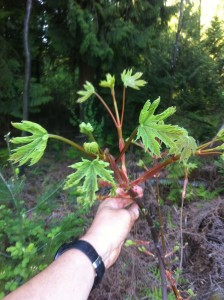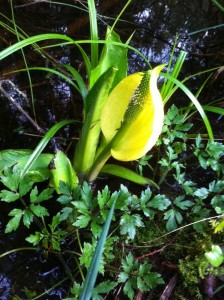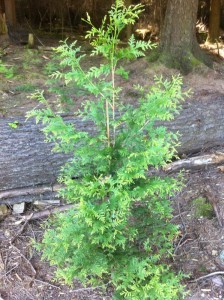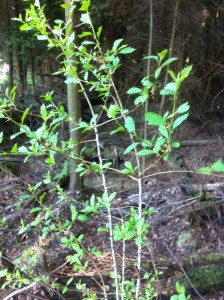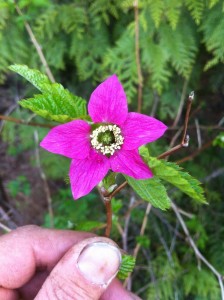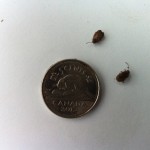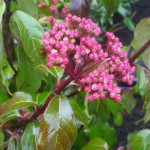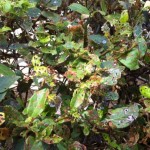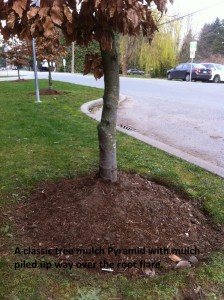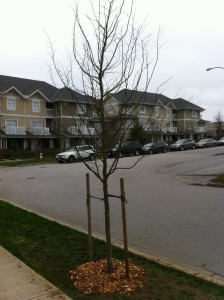Healthy Vuburnum tinus are great plants with fragrant pinkish white flowers. But sometimes your plants get attacked by the Viburnum leaf beetle ( Pyrrhalta viburni) in numbers and soon all you see is tons of holes in your leaves. The larvae attack in spring and adult beetles in late summer.
Now what?
The cheapest solution is to renovate the plants by cutting them back hard at the base and waiting for new growth to emerge. A more expensive but better long-term solution is to remove the plants and plant a more suitable substitute.
Yes, we have all seen them and most of us have made them but they are detrimental to the tree’s health. Why? Because piling mulch against the trunks of trees and shrubs creates a dark, moist, low-oxygen environment to which above-ground tissues are not adapted.
Fungal diseases require a moist environment to grow and reproduce; piling mulch on the trunk provides exactly the right conditions for fungi to enter the plant.
Also, opportunistic pests are more likely to invade a plant whose bark is wet due to excessive mulching.
Instead of creating mulch volcanoes (see pictures), instead, taper the mulch down to nearly nothing as you approach the trunk. This donut-shaped application will protect the soil environment as well as the above-ground plant tissues.
Now you know.
Source: Washington State University Extension Fact Sheet FS160E
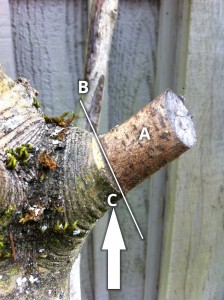 The best cut is at (B) just above the branch collar (C). The stub (A) dies and can introduce disease into the tree; the tree cannot close the wound until the stub is removed. The branch collar houses repair cells which means we also do not want to cut into the collar.
The best cut is at (B) just above the branch collar (C). The stub (A) dies and can introduce disease into the tree; the tree cannot close the wound until the stub is removed. The branch collar houses repair cells which means we also do not want to cut into the collar.
Practice making Proper cuts and your trees will be that much healthier for it.


